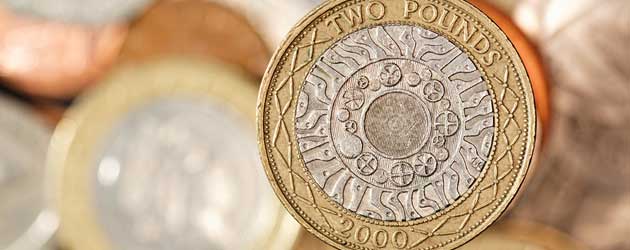
The Pound rallied strongly against the majority of its currency peers yesterday as the long awaited first quarter Gross Domestic Product report showed that Britain expanded by 0.3% during the first three months of 2013. Annualised growth rose to a near-two-year high of 0.6% as robust Service Sector Output, fuelled by impressive UK motor vehicle sales, helped Britain avoid falling into a triple-dip recession.
The Pound to Euro exchange rate (GBP/EUR) rose by around 1.5 cents to 1.1887, within 1 pip of a 3-month high. Sterling hit a 2-month high of 1.5480 (GBP/USD) against the US Dollar after strengthening by almost 2.0 cents. The Pound also hit a 2-month high of 1.5010 (GBP/AUD) against the Australian Dollar, and a 2.5-month high of 1.5823 (GBP/CAD) against the Canadian Dollar.
Sterling had a terrible start to 2013 with weak Manufacturing, Construction, Retail Sales, and Industrial Production figures leading many to believe that the UK was on the verge of sliding into a symbolically significant triple-dip recession. On top of that, investors feared that Britain was set to lose its coveted triple-A credit rating, and speculation was rife that the Bank of England would look to shore up the UK economy with further monetary easing measures. This mélange of negativity sent the Pound lower by around 6 cents versus the Euro and close to 10 cents against the US Dollar.
Moody’s, and then Fitch, proved that there was some substance in the British New Year blues, as they downgraded the UK sovereign credit rating by one notch to Aa1/AA+ (the second highest grade of debt).
However, the UK Budget for 2013 did not see any significant changes to the Bank of England’s remit, meaning that with the headline rate of CPI inflation standing above the BoE’s target of 2.0% at 2.8%, Mervyn King and co. have remained reluctant to raise the asset purchasing target above £375 billion.
And to top things off, yesterday the Office for National Statistics announced that Britain avoided slipping into, what was possibly the most dangerous of pitfalls, a triple-dip recession. Although the Manufacturing Industry shrunk by -0.3%; the flagging Construction Sector declined by -2.5%; and Agricultural Output contracted by -3.7%, the outlook for the UK economy now looks far better than during the middle of January when Sterling started spiraling lower.
The dominant Services Industry – which accounts for over 70% of GDP – grew by 0.6% in the first quarter, and Industrial Output expanded by 0.2% as a major North Sea oilfield re-opened. In response to the robust 0.3% GDP print, which beat forecasts of just 0.1% growth, the Chancellor George Osborne said: “Britain is recovering and we are building an economy fit for the future”.
Since January, the Eurozone has been ravaged by the Cyprus bailout debacle; the inconclusive Italian elections; the threat of Slovenia requesting financial assistance; record Unemployment; and a slowdown to Germany – its largest economic force. This has led to louder chorus calls for the ECB to reduce rates, which has spooked investors and made it possible that GBP/EUR could continue growing towards psychological resistance at 1.2000 over the next few weeks.
Towards the end of the first quarter, the optimism in the United States also began to run out of steam as Manufacturing Output, Retail Sales, and labour market data began to slide. This trend of economic weakness in the US was most notably signalled by the profound drop-off in US Non-farm Payrolls from 236,000 in February to just 88,000 in March. The downturn is most likely a response to the ‘fiscal cliff’ and ‘sequestration’ spending cuts that kicked in during Q1, and has forced to Federal Reserve to stick to its aggressive QE3 monetary easing scheme. US first quarter GDP results are released tomorrow and a score below the expected 1.4% could allow GBP/USD to breach resistance around 1.5550.

Comments are closed.